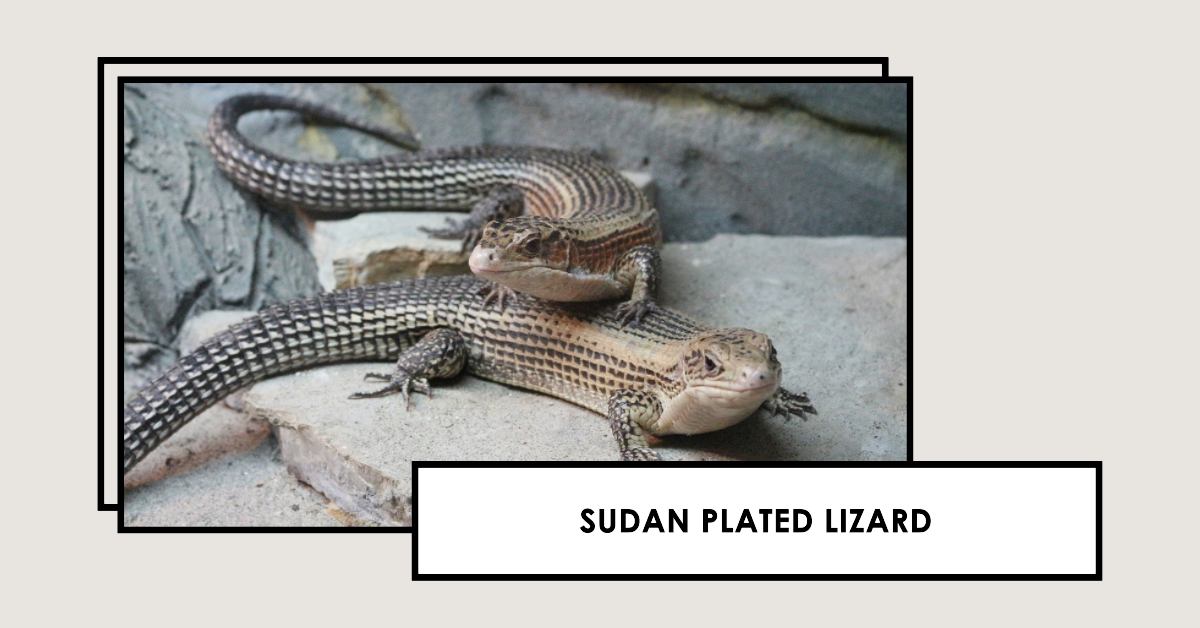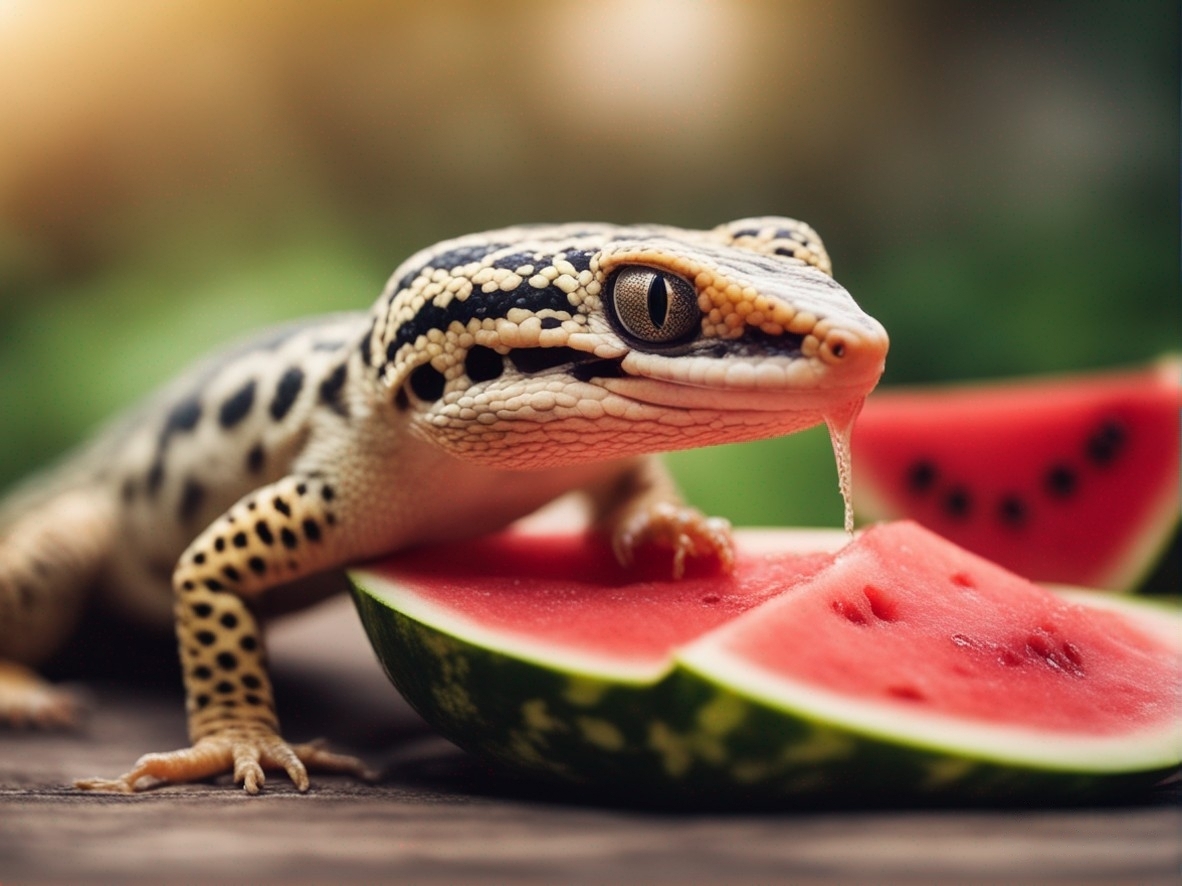Introduction
The Sudan Plated Lizard, also known as Gerrhosaurus major, is a unique reptile species native to the desert regions of Africa. It is one of the most popular exotic pets among herpetology enthusiasts, and is a great choice for those looking to keep a pet lizard.
With proper care and maintenance, the Sudan Plated Lizard has the potential to live a long and healthy life, with some specimens reaching up to 10 years of age. When it comes to caring for these lizards, it is important to understand their size, diet, habitat, and behavior.
Sudan Plated Lizards can grow to be up to 12 inches in length and require a terrarium with ample space for them to move around. They are omnivorous, so their diet should include a mix of vegetables, fruits, and insects.
Additionally, it is important to research the Plated Lizard’s natural habitat in order to create an enclosure that closely mimics their natural environment. Understanding the Plated Lizard’s temperament is also essential for providing the best care as these lizards can be quite skittish. Finally, it is important to be aware of any potential health issues that may arise and to provide regular shedding and feeding schedules.
Sudan Plated Lizard Overview
The Sudan Plated Lizard, or Gerrhosaurus major, is an exotic pet reptile species native to the African deserts. As one of the few desert lizards, they are known for their unique care needs and behaviors. Their size, which ranges from 8 to 12 inches, makes them a popular choice for those looking for a manageable pet lizard.
When caring for a Sudan Plated Lizard, it is important to understand their habitat, diet, and behavior. They need a terrarium with a temperature range between 75 and 85 degrees Fahrenheit, and a substrate that can hold humidity.
A balanced diet of insects, fruits, and vegetables is essential for their health, and they should be fed every other day. As for behavior, they are generally docile but can become aggressive if they feel threatened.
Additionally, they are known to shed their skin regularly and require frequent bathing to stay clean and healthy. Overall, the Sudan Plated Lizard is an interesting species of reptile that can make a great exotic pet for those with the patience and knowledge to care for them. With the right environment, diet, and care, they can live up to 10 years and provide lasting companionship.
Caring for the Sudan Plated Lizard
The Sudan Plated Lizard (Gerrhosaurus major) is a popular exotic pet, native to the deserts of Africa. It is also known as the African Plated Lizard or the Giant Plated Lizard. Caring for a Sudan Plated Lizard requires some specialized knowledge, as you must provide the right habitat, diet, and behavior for your pet to remain healthy and happy.
Before you bring one home, make sure you understand the Plated Lizard’s natural origins, size, lifespan, and temperament, as well as the necessary habitat, diet, and enclosure for your pet. A Plated Lizard’s natural habitat is a dry desert, so you’ll need to create a terrarium that mimics this environment. You’ll also need to provide the right diet and feeding schedule for your pet.
A Plated Lizard’s diet should include insects, greens, and other small animals, and you should feed your pet every two to three days. Additionally, you’ll need to monitor your lizard’s behavior and health, as well as keep an eye out for signs of shedding or other health issues. With the right care, a Sudan Plated Lizard can live up to eight years, making it a great companion for reptile enthusiasts.
Creating an Ideal habitat for the Plated Lizard
Creating a habitat for the Sudan Plated Lizard (Gerrhosaurus major) is an essential part of caring for these exotic pets. The ideal terrarium for a Plated Lizard should be built to mimic their natural African desert environment, and should also account for their size, behavior, and lifespan.
The enclosure should be large enough to provide enough space for the lizard to move around and explore, and should be equipped with a secure lid to prevent escape. The terrarium should also be designed to provide the right temperature, humidity, and lighting in order to ensure the health of the reptile.
It is important to provide a variety of substrates for the Plated Lizard to dig and hide in, as well as a variety of rocks and logs for them to climb and bask on. The diet of a Plated Lizard should consist of a variety of insects, and they should be fed once or twice a week. Shedding and grooming are also essential for a Plated Lizard’s health, and they should have access to a shallow bowl of water to aid with shedding.
Following these guidelines for Plated Lizard care and habitat will ensure that your pet reptile will live a long and healthy life.
Feeding and Diet Requirements for the Plated Lizard
The Sudan Plated Lizard, Gerrhosaurus major, is an exotic pet species native to the deserts of Africa and is a popular choice among reptile enthusiasts. Caring for the Sudan Plated Lizard requires a basic understanding of the species’ habitat, diet, behavior, and lifespan. The Sudan Plated Lizard is a medium-sized reptile species, typically growing to a length of 8-10 inches.
When housing a Sudan Plated Lizard, a terrarium with a dry, sandy substrate and plenty of hiding places should be provided. In terms of diet, the Sudan Plated Lizard is an omnivore, but should primarily be fed a diet of insects, such as crickets, mealworms, and waxworms.
In addition to providing a balanced diet, it is important to provide proper hydration for the Sudan Plated Lizard, as they are a desert species. It is also important to be aware of the Sudan Plated Lizard’s breeding habits and health issues, as well as their temperament, shedding, and size.
With the right care and attention, the Sudan Plated Lizard can make a wonderful addition to any herpetology enthusiast’s collection of exotic pets.
Common Health Issues of Plated Lizards
The Sudan Plated Lizard (Gerrhosaurus major) is an exotic pet species native to the deserts of Africa. They are popular reptile pets due to their unique size, appearance, and behavior. When properly cared for, they can make great companions and can live up to 10 years or more.
However, there are some common health issues that owners should be aware of when caring for this species. Plated Lizards are prone to dehydration and require a high-humidity environment in order to stay healthy. Additionally, they are susceptible to parasites and respiratory infections, so it is important to monitor their diet and habitat closely.
An appropriate terrarium for Plated Lizards should include a warm basking area, a humid hide, and plenty of climbing space. It is also important to provide a balanced diet of insects and vegetables, as well as plenty of calcium and vitamin D3 supplements.
Finally, owners should also be mindful of the Plated Lizard’s shedding process and monitor their shedding cycles.
With proper care and attention, Plated Lizards can make wonderful pets, but owners should be aware of the potential health issues that may arise.
Breeding and Reproduction of Plated Lizards
The Sudan Plated Lizard, also known as Gerrhosaurus major, is a species of reptile native to the deserts of Africa. These exotic pets are highly sought after due to their unique appearance and docile temperament. When properly cared for, these lizards can live up to 10 years, making them a great long-term pet.
Breeding and reproduction of Plated Lizards is a complex process that requires a great deal of knowledge and experience. In order to successfully breed these lizards, they must be provided with a suitable habitat, an appropriate diet, and a healthy environment.
Additionally, it is important to understand the behavior and size of the lizards, as well as their shedding and feeding habits. Finally, it is important to be aware of any health issues that could arise in order to ensure the best possible outcome for the Plated Lizards.
Conclusion
The Sudan Plated Lizard is a unique and fascinating exotic pet that can bring joy to reptile enthusiasts. They have specific care requirements, such as a terrarium, a specific diet, and regular shedding, but with the right knowledge and dedication, they can make great companions.
By understanding their origin, behavior, and health needs, owners can ensure that their pet has a long and healthy life.
Frequently Asked Questions
What is a Sudan Plated Lizard?
The Sudan Plated Lizard, also known as Gerrhosaurus major, is a species of lizard native to the deserts of North and East Africa.
They are a medium-sized lizard, typically growing to about 10-15 inches in length, and are characterized by their dark gray coloration with yellow spots and stripes, and a row of spines along the back.
What kind of environment do Sudan Plated Lizards need?
Sudan Plated Lizards require a warm, dry environment in order to thrive. In captivity, this can be achieved by creating a terrarium with a temperature range of 75-85 degrees Fahrenheit, a humidity level of 30-50%, and plenty of hiding spots and climbing branches.
What do Sudan Plated Lizards eat?
Sudan Plated Lizards are omnivores and can be fed a variety of foods including insects, fruits, vegetables, and commercially-prepared reptile diets.
It is important to provide a balanced diet to ensure the lizard receives all the essential vitamins and minerals it needs.
How long do Sudan Plated Lizards live?
Sudan Plated Lizards typically live between 8-10 years in captivity, though their lifespan can be extended with proper care and nutrition.
What kind of behavior can I expect from my Sudan Plated Lizard?
Sudan Plated Lizards are generally docile and can be handled with care. They are active during the day and prefer to spend their time exploring and basking in the sun.
Are Sudan Plated Lizards a good pet for beginners?
Sudan Plated Lizards can make a great pet for beginners, as long as they are willing to commit to providing the proper care and environment.
They are relatively easy to care for and can be a rewarding pet.
What are some common health issues associated with Sudan Plated Lizards?
Common health issues associated with Sudan Plated Lizards include metabolic bone disease, respiratory infections, intestinal parasites, and skin infections.
It is important to monitor your lizard for any signs of illness and to seek veterinary care if necessary.

